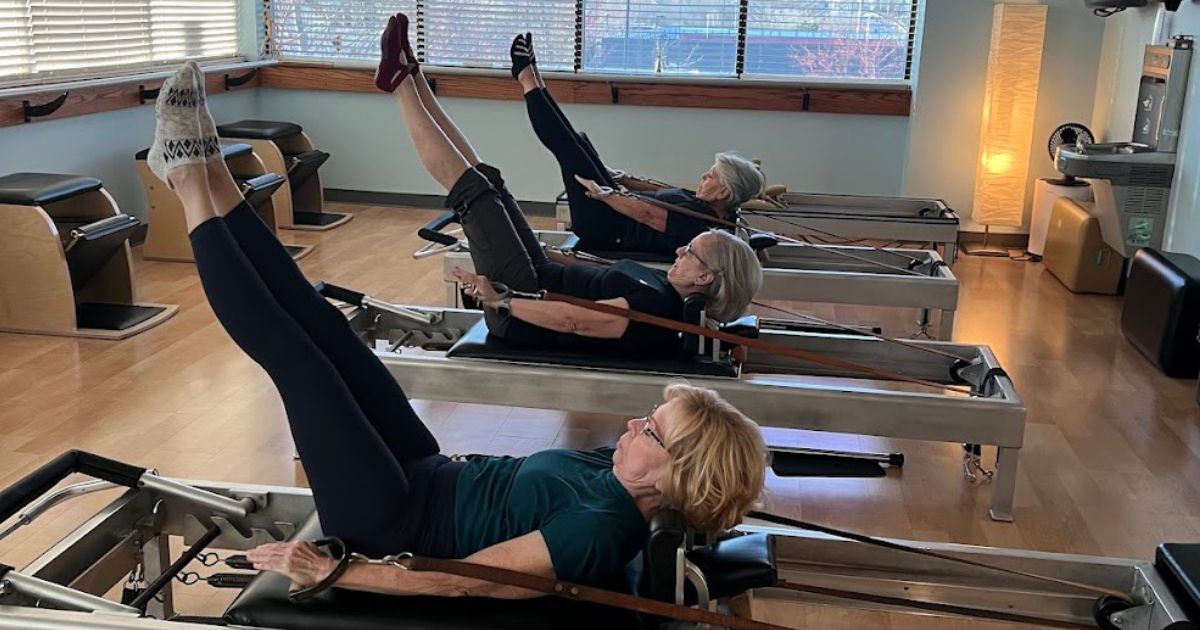As we age, maintaining muscle mass becomes increasingly important for overall health, mobility, and independence. After 50, the body naturally loses muscle due to hormonal changes, a process known as sarcopenia. While traditional weightlifting is often recommended for strength, Pilates offers a powerful, joint-friendly alternative for building and maintaining muscle without unnecessary strain or bulk.
Why Building Muscle After 50 Matters
Muscle mass isn’t just about bulking up — it plays a crucial role in metabolism, bone density, posture, and balance. Strengthening muscles after 50 helps to:
- Prevent osteoporosis and improve bone health
- Support joint stability and reduce injury risk
- Enhance posture and alleviate back pain
- Maintain independence and daily function
Maintaining muscle mass helps you stay strong and independent, allowing you to do all the things you want to do as you age.
How Pilates Builds Muscle Mass After 50
Pilates focuses on controlled movements, core stability, and resistance training, making it an ideal workout for aging bodies. Here’s how it supports muscle growth:
1. Time Under Tension
Pilates emphasizes slow, controlled movements, keeping muscles engaged for longer periods, which encourages strength development.
2. Eccentric Contractions
Many Pilates exercises focus on lengthening muscles under tension, a scientifically proven method for increasing muscle density and strength.
3. Spring Resistance
Pilates equipment, like the Reformer and Cadillac, provides adjustable resistance that strengthens muscles while being easier on the joints compared to traditional weights.
4. Full-Body Engagement
Rather than isolating muscle groups, Pilates integrates the entire body, promoting balanced strength and preventing muscle imbalances.
5. Core Activation
A strong core is essential for stability, balance, and preventing falls — key concerns for those over 50.
Pilates Exercises for Building Muscle After 50
Certain Pilates exercises are particularly effective for maintaining and improving muscle strength as we age:
- The Hundred – Builds strength and endurance.
- Footwork on the Reformer – Strengthens the lower body and enhances the connection to the powerhouse. Builds strength and mobility in the feet and ankles.
- Leg Springs on the Cadillac – Targets the lower body with controlled resistance to build lean muscle.
- Standing Arm Series with Weights – Builds upper body strength, connects the arms from the back, and helps with posture.
- Long Stretch – Strengthens the entire body and teaches you to stay connected to your powerhouse—like a piece of steel!
Pilates vs. Traditional Strength Training for Adults Over 50
While lifting heavy weights can be effective for building muscle, it’s not always the best option for older adults who may have joint pain or previous injuries. Pilates offers:
- Lower impact on joints – Gentle on knees, hips, and shoulders while still building strength.
- Improved flexibility and mobility – Keeps the body moving efficiently, reducing stiffness and pain.
- Core-centric movements – Essential for balance, preventing falls, and maintaining functional strength.
Who Can Benefit from Pilates for Muscle Building After 50?
- Active adults looking to maintain strength and vitality.
- Anyone experiencing joint pain who needs a lower-impact alternative to traditional strength training.
- Those recovering from injury who want a safe and effective way to rebuild muscle.
- Women post-menopause who want to counteract muscle loss and maintain bone health.
Final Thoughts
Building and maintaining muscle mass after 50 is essential for long-term health and quality of life. Pilates offers a safe, effective, and joint-friendly way to strengthen muscles, improve balance, and enhance overall well-being. Whether you’re new to exercise or looking for a complement to your existing routine, Pilates can help you stay strong, mobile, and active for years to come.
Are you ready to build muscle in a way that supports your body as you age? Try Pilates and feel the difference!

